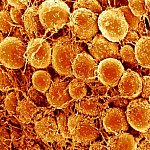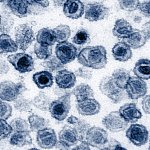You are here
December 28, 2009
2009 Research Highlights — Promising Medical Advances
Findings with Potential for Enhancing Human Health
NIH has nearly 6,000 NIH staff scientists and supports more than 325,000 researchers with competitive grants to all 50 states, the territories and more than 90 countries around the world. Here's just a small sampling of the accomplishments made by NIH-supported scientists in 2009.








